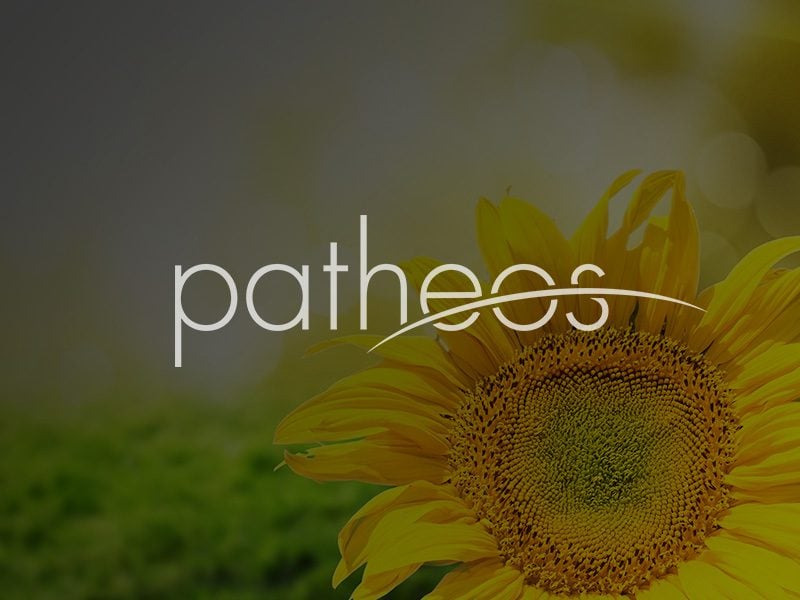In his great book, Sweeter than Honey: Orthodox Thinking on Dogma and Truth, Peter Bouteneff writes about “true stories” – stories which are told which cannot be historically verified (or may not even be meant to be taken as history) and yet, despite this, mediates some aspect of the truth to their hearer or reader. While we might be think that “historical fact” is the only means we can accept of mediating truth, in reality, we accept many “fictions” even with our “historical mindset” and look for truth in them despite knowing they are not “historically accurate.” He points out how we accept “reality television” even though we know, behind the scenes, there is much manipulation going on in them, that they do not present the full and only accurate presentation of the facts. “The assumption that such programming depicts reality is almost laughable when we witness the carefully sculpted and strangely predictable emotional scenes, dramatizations, and embellishments of events.”[1] We are entertained by them, and learn something about the human condition through them. “Fact and fiction are blurred in this genre, and its immense popularity testifies that we are willing to tolerate such ambiguity in the interests of a good story.”[2] He also points out how many of us are willing to read works of fiction like Harry Potter, The Lord of the Rings, and The Chronicles of Narnia, or movies like Star Wars, Babette’s Feast, and Matrix: Revolutions and find within them such a compelling narrative that they end up affirming elements of the truth for us.[3] Despite a rather “positivistic” view of the world, we end up transcending it in our daily experience and understand how narrative can, and does, reveal something of the truth, even if it is not historical; thus, he says, many of the stories in Scripture are simply understood.[4] “We tell and retell these stories. We read them in the midst of the church. We compose and illustrate children’s books about them. They are the subjects of great works of art. The characters come to life for us. They ring true, and so they come to be real for us.”[5]
This sets us up to understand the story of Sts Barlaam and Josaphat.[6] On August 26, the East celebrates their Feast (the West celebrates their feast in November). We must recognize what we have here is a pious story which is revealing much about the holy life according to Christian expectations. It does this by relating to us a legend, one about a prince of India, Josaphat, who is convinced to give up his inheritance and to become a Christian monk. When we explore this story further, it becomes evident who this Josaphat is: he really is a historical personage, and the story is his story. But what we are told here is a legendary form of the historical story, and one which alters it significantly to teach us something about the historical personage. The original version of this story is the story of the Bodhisattva (Josaphat) Siddhartha and how he was to become the Buddha. What we have here is a Christianized version of the Buddha legend, this time making the Buddha himself a disciple of Christ. There is no question about it; once the story is examined and looked at side by side with the story of Siddhartha, its origin is clear, even if we do not know the full historical explanation for this transformation (we know parts of it, to be sure, but we do not know who was the first one to suggest Siddhartha became a Christian).
What are we to make of this? Historically, it is absurd. Siddhartha was born before Christ. So in the sense of religion, he could not have been a Christian. Or could he? St Justin Martyr tells us that those who sought the Logos, even when they were deemed to be atheists by their peers, if they lived out their lives based upon what they understood of the Logos, they could be and should be proclaimed as Christians. This was, of course, because the Logos is the eternal Son of God, and so the Logos was encountered, in various ways, before the historical incarnation, allowing those who follow him according to their level of access to the Logos. “We have been taught that Christ is the first-born of God, and we have declared above that He is the Word of whom every race of men were partakers; and those who lived reasonably are Christians, even though they have been thought atheists; as, among the Greeks, Socrates and Heraclitus, and men like them; and among the barbarians, Abraham, and Ananias, and Azarias, and Misael, and Elias, and many others whose actions and names we now decline to recount, because we know it would be tedious.”[7] In this way, we can begin to understand the story of Sts Barlaam and Josaphat. It is not one of historical truth, but of spiritual truth. Siddhartha was led by Christ and became a Christian in the sense of St Justin’s quote. And the fact that he was elevated as a Saint in the East and West points to the work of the Holy Spirit in his life. Siddhartha is a universal saint; he can be and should be a source of contact with Buddhists, because his teachings contained the seeds of his holiness within them. Of course, as Christians, we must wrestle with them, as we wrestle with any pre-Christian source, purifying them in the light of Christ – but if we can do that for Plato and Aristotle, we certainly can do that for the Buddha. For unlike Plato and Aristotle, Buddha’s greatness came from his striving for perfection, from his love for the truth. Indeed, Siddhartha’s tells us that the suffering of life can be and should be overcome: Jesus confirms Siddhartha’s mission and fulfills it in a way even Siddhartha could not have predicted: death has been transcended by the means of death, and the cycle of sin has been broken by the God-man born of a virgin.
Knowing your good will from childhood, O Josaphat,
Knowing in your heart the one God:
For you were led from the earthly kingdom into the monastic life,
Granted to follow the great Barlaam:
Having with him even now the all-bright fatherland Jerusalem on high,
Wanting, delighting in the beautifully good Holy Trinity,
We pray to you royal beauty, remember us who honor you in faith.
Footnotes
[1] Peter Bouteneff, Sweeter than Honey: On Orthodox Thinking on Dogma and Truth (Crestwood, NY: St Vladimir’s Seminary Press, 2006), 78.
[2] Ibid., 78.
[3] See ibid., 92-96.
[4] He is not denying the historicity of Christ, but he is looking more at the mode of Scripture storytelling, reminding us that the authors do not look at history in the same way the modern historicist does. Scriptural writers were interested in revealing the truth behind history – history itself, if we want to be honest, can never be produced, because all writers are subjective in their interpretation of it.
[5] Ibid., 80.
[6] I’ve previously written on St Josaphat, and you can read that post here.
[7] St Justin Martyr, First Apology XLVI in ANF(1):178.












